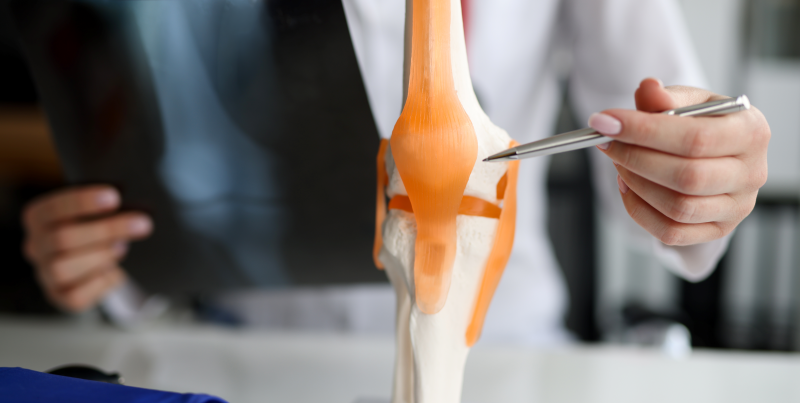From seed money to big collaborations: new hope for osteoarthritis patients

When rheumatologist and BJI Scientist Tom Appleton received catalyst funding from the Bone and Joint Institute, he never imagined the research impact those early-stage grants would eventually have. He has now seen a small amount of seed money bloom into numerous big research collaborations, more than 15 publications, and close to $4 million in grant funding, including three Institutes of Health Research (CIHR) grants and a Canada Foundation for Innovation (CFI) grant.
“The type of work that we do here can't be done by an individual scientist or even an individual research team. It's going to take multiple teams to be able to make that happen,” Appleton says. “If we didn't have the institute and the people involved, we wouldn't have been able to bring all of those resources together.”
The Institute, and the many opportunities it provides for interdisciplinary, collaborative research, attracted Appleton to join the Schulich School of Medicine and Dentistry at Western University in 2016. As a clinician scientist and now chief of the division of rheumatology at St. Joseph’s Health Care London, he says launching his career here really help to propel his research program.
Institute catalyst grants really enabled him to kick things off in 2017 as he worked with a new collaborative team to examine the association of joint lining thickening with patient outcomes after total knee arthroplasty for end-stage osteoarthritis (OA). Knee osteoarthritis (OA) is a leading cause of pain and disability globally.
Staying true to a central focus on OA, he collaborated with two catalyst grant teams starting in 2019, to evaluate a new potential disease-modifying drug and delivery system as well as to measure changes in bone blood flow in patient who are healthy and those living with OA. In 2020 and 2021, he led a successful catalyst application that broadened his focus to look at associations between biology, biomechanics and pain and participated on five other teams working on topics from patient satisfaction to imaging.
Working with colleagues such as Trevor Birmingham, a professor and Canada Research Chair in Musculoskeletal Rehabilitation in Western’s Faculty of Health Sciences, was key to integrating the biology of inflammation research with gait biomechanics to better understand a body’s function and movement and its effects on feet, ankles, knees, hips and back.
“We had a postdoctoral fellow, Hayden Atkinson, who looked at the change of inflammation after joint realignment surgery. He showed that the amount of inflammation dramatically decreases afterwards. That was a key concept for us to be able to apply to the CIHR project grant,” says Appleton.
Appleton managed to secure $1,3 million in funding over five years through two CIHR grants. The grants will support research on the effectiveness of knee bracing, a potential treatment for people with OA, as well as the long-term benefits of High Tibial Osteotomy (HTO), a type of surgery that straightens the lower limp of patients and has shown promising results.
“A small amount of Catalyst funding in the beginning and a critical collaboration through the institute led to a big program that is going to be many years and result in whole new discoveries,” says Appleton.
At the same time, BJI’s support led to a $1.25 million in funding Canada Foundation for Innovation (CFI) grant in 2021 making Western the first university in Canada equipped with single cell level molecular spatial profiling technology. Using this technology along with collaborative team member Geoffrey Pickering, vascular biologist and cardiologist, Appleton will examine changes in blood vessels that feed joints and observe the behaviour of cells within tissues at an incredibly high resolution. He predicts that this will shed crucial insights into diseases such as osteoarthritis.
“Catalyzation doesn’t happen overnight, but it ultimately leads to bigger and better things over time,” says Appleton. “The longer you wait until you look back, the more you realize, ‘Oh my gosh, this has really fanned out into a lot of ramifying benefits from what was initially a fairly straightforward idea.’”

